|
In the 1960s, dozens of hibakusha — people affected by the atomic bomb — traveled around the world to tell their stories and plead for peace. The earliest of these trips were organized primarily by Barbara Reynolds who had moved from the United States to Hiroshima in the 1950s and who had become profoundly affected by the stories of hibakusha. From 1958 on, Barbara Reynolds committed her life to helping hibakusha share their experiences of the bomb to the world in order to prevent more suffering from nuclear weapons. Not only did she organize world speaking tours for hibakusha, but she also founded the Hiroshima World Friendship Center in 1965 to form a permanent site for hibakusha to educate the world about what happened to them. But many thousands more had suffered the effects of the a-bomb and kept their traumatic stories private for years. Some didn’t share their stories for decades. Sadae Kasaoka was one of those who suffered in silence until 2000, when she happened to be invited to her grandchildren’s elementary school as one of the local hibakusha. She shared her story with the students and was very moved at the theatrical performance the students made based on what she told them. After that, it was like a dam had broken: after she retired in 2005, Kasoaka devoted much of her time to sharing her story to Japanese and foreign visitors through the Peace Memorial Museum, the Hiroshima World Friendship Center, and other similar organizations. Kasaoka also traveled to other countries to tell her story, including the United States, and has become a prolific public speaker about the atomic bomb. Below is a collection of excerpts from Kasoaka’s writings and interviews about her experience in 1945 during and immediately after the bombing of Hiroshima, as well as a brief explanation of her motivation for sharing her story so widely and with such vigor so late in her life. Warning: the following includes graphic descriptions of extreme burns and other injuries, as well as other upsetting imagery. You may read the accounts of other hibakusha at the link below. https://www.wfchiroshima.org/english/hibakusha-stories/ —
In June, the Golden Rule ship, which first inspired Barbara Reynolds to begin her “forbidden voyage” into antiwar activism, will be visiting New London, CT. As the world’s first modern protest ship and a vessel originally operated by the CNVA, the Golden Rule has strong historical ties to VPT. To stay in the loop about events related to the coming of the Golden Rule, sign up for our newsletter: http://eepurl.com/Oqf99 — Support Us We commit a significant amount of research and writing to produce A Peace of History each week. If you like our weekly posts, please consider supporting this project with a one-time or recurring donation. Your gift will be used to continue producing more A Peace of History posts as well as the greater mission of VPT. You may type in however much you would like to give; contributions of all sizes are appreciated. Click this link to learn more about what we do and how you can donate: https://www.mightycause.com/organization/Voluntown-Peace-Trust — Sources Kasaoka, Sadae. “Losing both my parents all at once, I had no words to describe my loss.” Hiroshima Speaks Out. https://h-s-o.jp/kasaoka/post_en/05/ Kasaoka, Sadae. “The A-bombing — Evil Itself.” World Friendship Center. https://www.wfchiroshima.org/english/wp-content/uploads/sites/2/2016/09/KasaokaStoryE.pdf Barbara Reynolds began her activism with “the forbidden voyage” she took with her family into the US Pacific Proving Grounds, disrupting the nuclear weapons testing there as she and her family returned to Hiroshima from a trip around the world. They had been inspired by the Golden Rule ship and the four Quaker antiwar activists who had intended to sail it to disrupt the weapons testing themselves. But with the Golden Rule crew monitored and twice arrested by the US Coast Guard, it was Barbara and her family who completed the mission and made news around the world for their daring act of protest. But their renown was especially strong in Hiroshima, which the family learned when they finally returned to the city. Over the next few years, Barbara Reynolds organized the 1962 Peace Pilgrimage and the 1964 World Peace Study Mission, which brought hibakusha atomic bomb survivors around the world to share their stories and sue for peace. In 1965, Barbara Reynolds founded the World Friendship Center in Hiroshima, in part to share the stories of hibakusha first-hand. Now a part of a greater network of organizations in Japan and around the world, the World Friendship Center in Hiroshima is still in operation. While the number of surviving hibakusha dwindles, there is still much to learn from the personal testimonies they have left. Below is the account of one hibakusha, Miyoko Matsubara, who traveled with Barbara Reynolds around the world for both the 1962 Peace Pilgrimage and the 1964 World Peace Study Mission. Miyoko Matsubara was a young student at the time of the bombing. She passed away in 2018. Warning: the following includes graphic descriptions of extreme burns and other injuries, as well as other upsetting imagery. https://www.wfchiroshima.org/english/wp-content/uploads/sites/2/2016/09/MatsubaraStoryE.pdf You may read the accounts of other hibakusha at the link below. https://www.wfchiroshima.org/english/hibakusha-stories/ —
We at VPT are planning for the arrival of the Golden Rule in New London, CT in June. As the world’s first modern protest ship and a vessel originally operated by the CNVA, the Golden Rule has strong historical ties to VPT. To stay in the loop about these events, sign up for our newsletter: http://eepurl.com/Oqf99 — Support Us We commit a significant amount of research and writing to produce A Peace of History each week. If you like our weekly posts, please consider supporting this project with a one-time or recurring donation. Your gift will be used to continue producing more A Peace of History posts as well as the greater mission of VPT. You may type in however much you would like to give; contributions of all sizes are appreciated. Click this link to learn more about what we do and how you can donate: https://www.mightycause.com/organization/Voluntown-Peace-Trust — Source Matsubara, Miyoko. “The Appeal of a Girl Survivor.” World Friendship Center. https://www.wfchiroshima.org/english/wp-content/uploads/sites/2/2016/09/MatsubaraStoryE.pdf The first modern protest ship, the Golden Rule, is set to visit New London, Connecticut on June 9 and 10 of this year. The ship almost immediately inspired others to emulate the tactic when it first made waves in 1958 — the first of which was the Reynolds family aboard the yacht Phoenix of Hiroshima, who ended up completing the Golden Rule’s original mission to disrupt the US nuclear weapons testing operations in the Pacific. But after her adventures defying both the United States and Soviet nuclear weapons testing out on the high seas, Barbara Reynolds shifted her attention to the victims of the bomb. Back in Japan, she organized the 1962 Peace Pilgrimage of two hibakusha (“blast-affected people”) women, and then again the 1964 World Peace Study Mission which took 25 hibakusha to 150 cities around the world to share their stories. (Read about the 1962 Peace Pilgrimage in Barbara Reynolds’ own words here). Following these two world tours, Barbara returned to Hiroshima and continued her work promoting peace. In 1965, she became the first director of the World Friendship Center (WFC) in Hiroshima, Japan, which was established as a hub for international exchange and dialogue on peace-related issues. The center invited visitors from around the world to come learn about the lingering effects of the atomic bombings and to hear firsthand the experiences of the hibakusha. The WFC quickly became a symbol of hope and reconciliation in the aftermath of the atomic bombing, and it still continues its mission to share the stories of the atomic bomb survivors and to foster peace between nations today. Ten years later, in 1975, Barbara Reynolds also founded the Wilmington Peace Resource Center at Wilmington College in Ohio, including the Hiroshima/Nagasaki Memorial Collection, an archive of materials related to the atomic bombings and their aftermath. Most of the contents were donated by Barbara Reynolds herself — documents and other materials that she had collected over her decades working with hibakusha, doctors, and peace activists. The center provides educational resources to students and researchers as well as space for activists to gather and organize. Throughout her life, Reynolds remained committed to the principles of nonviolence and peaceful conflict resolution, and she continued to work for social justice until her death in 1990. Her legacy serves as a reminder of the power of ordinary individuals to effect change and promote peace in the face of adversity. And it all started with a chance meeting with a few radical Quakers — it was the Golden Rule and the CNVA that put Barbara on the path to accomplish all that she did for the hibakusha and the cause of world peace. The Golden Rule sails again to bring attention to the new arms race and the recent international ban on nuclear weapons. As they travel around the United States, the crew hopes to inspire more action with innovative strategies, much like the ship inspired Barbara and others decades ago. When the Golden Rule enters the Thames River in June, it will be a tribute not only to the ship's historic journey but also to the legacy of Barbara Reynolds and others like her. See below the brief profile for Barbara Reynolds prepared for the 1964 World Peace Study Mission, one of the ambitious projects that the Golden Rule inspired. Then, follow the link to read the profiles of the other participants of the project, including the hibakusha who were the main subjects of the mission. See more profiles here: https://digital.opal-libraries.org/digital/collection/p17342coll12/id/11/rec/1 —
We at VPT are planning for the arrival of the Golden Rule in New London, CT in June. As the world’s first modern protest ship and a vessel originally operated by the CNVA, the Golden Rule has strong historical ties to VPT. To stay in the loop about these events, sign up for our newsletter: http://eepurl.com/Oqf99 — Support Us We commit a significant amount of research and writing to produce A Peace of History each week. If you like our weekly posts, please consider supporting this project with a one-time or recurring donation. Your gift will be used to continue producing more A Peace of History posts as well as the greater mission of VPT. You may type in however much you would like to give; contributions of all sizes are appreciated. Click this link to learn more about what we do and how you can donate: https://www.mightycause.com/organization/Voluntown-Peace-Trust — Sources “Barbara Reynolds and World Friendship Center – An American Woman who Conveyed Hibakusha Voices to the World-” Hiroshima for Global Peace. https://hiroshimaforpeace.com/en/world-friendship-center/ “Biographical Sketches of the Goodwill Ambassadors,” 1963, Wilmington - Barbara Reynolds Archives - The World Peace Study Mission 1964. The Barbara Reynolds Memorial Archives of the Peace Resource Center at Wilmington College, 1870 Quaker Way, Wilmington, OH. https://digital.opal-libraries.org/digital/collection/p17342coll12/id/0/rec/1 Wilmington Peace Resources Center. https://www.wilmington.edu/prc/ In June 2023, the first modern protest ship, the Golden Rule, will visit southeastern CT on its Great Loop journey. In past decades, this ship inspired many groups to use ships for political direct action – most famously Greenpeace. We have written much about VPT's connections to the Golden Rule and the team from the Committee for Nonviolent Action (CNVA) who first sailed the important ship (see our previous posts: "The Golden Rule", "The Forbidden Voyage of the Phoenix"). We have also shared stories about the Reynolds family, who completed the Golden Rule's original mission when the Golden Rule could not continue, and especially Earle Reynolds who captained the replacement ship, the Phoenix. But it was Barbara Reynolds who went on to become an even more important peace activist. From 1951 to 1954, Barbara lived in Hiroshima while her then-husband Earle conducted a study on radiation-affected children for the United States government. There, she witnessed firsthand the devastating effects of nuclear war including the hibakusha ("blast-affected people"), survivors of the atomic bombings who had been disfigured from the attacks. From 1954 to 1960, Barbara and the family sailed around the world, during which time they met the crew of the Golden Rule in Hawai’i and decided to take on the mission to disrupt the US nuclear weapons testing in the Pacific. Soon after the family returned to Hiroshima, Barbara and the rest of the family made a similar protest on the Phoenix, this time in Soviet territory. Then, in 1962, Barbara organized the Peace Pilgrimage to educate the world about the bombs. She accompanied two young hibakusha women, Miyoko Matsubara and Hiromasa Hanabusa, around the world to demand “no more Hiroshimas.” Two years later, Barbara would organize the World Peace Study Mission — a similar but even bigger world tour. Below is a report about the 1962 Peace Pilgrimage from Barbara Reynolds herself. In it, she discusses the challenges and the rewards of such a venture. Her words reveal a sensitivity to people’s needs, strong strategic thinking, and a little bit of humor. For those of us who have seen hatred stoked so easily, Barbara’s reflection on the Peace Pilgrimage’s warm reception in Hawai’i is especially gratifying. —
We at VPT are planning for the arrival of the Golden Rule in New London, CT in June. As the world’s first modern protest ship and a vessel originally operated by the CNVA, the Golden Rule has strong historical ties to VPT. To stay in the loop about these events, sign up for our newsletter: http://eepurl.com/Oqf99 — Support Us We commit a significant amount of research and writing to produce A Peace of History each week. If you like our weekly posts, please consider supporting this project with a one-time or recurring donation. Your gift will be used to continue producing more A Peace of History posts as well as the greater mission of VPT. You may type in however much you would like to give; contributions of all sizes are appreciated. Click this link to learn more about what we do and how you can donate: https://www.mightycause.com/organization/Voluntown-Peace-Trust — Source Reynolds, Barbara. “Report of Peace Pilgrimage,” San Francisco, 1962. https://digital.opal-libraries.org/digital/collection/p17342coll11/id/5/rec/27 In 1970, renowned lesbian antiwar activist and journalist Barbara Deming gave a talk in Palo Alto. By then, the antiwar movement that took off in the 1950s had inspired and influenced many more progressive social movements, but had also attracted much criticism. This speech addresses some of the nuances of nonviolent action, putting forth a practical argument for the strategy. The talk speaks for itself, but a few parts may stick out as particularly familiar to the modern reader. For example, Barbara Deming points out how easy it is in modern society to commit sabotage and severely disrupt the normal flow of public life. In fact, disruption has only become easier since this talk was first given — a central ethos of the modern tech industry is to “disrupt” traditional industries with the combination of new technologies and a flood of capital. Famously, the internal motto for Facebook has been “move fast and break stuff,” representing a wildly careless and irresponsible attitude about their actions. Indeed, we have already seen the deleterious effects of the tech industry’s arrogance on our society, our economy, and even our politics. According to Deming, however, societal disruption for the direct actionist should be intentional and well-thought out — the exact opposite of the tech industry’s mentality. Easier said than done. Intentionality and careful consideration are difficult in a society that often encourages participation without comprehension — no one really reads the Terms of Service on new digital products before purchasing or signing up, and very few refuse a new iPhone specifically because of the unethical supply chain involved in its manufacture. We tend to excuse all kinds of atrocious acts if we’ve participated in them. And those who do manage to stick to their independent convictions often tend to face challenges from within and from without. Barbara Deming gives a short anecdote about a young US soldier in Vietnam who — after refusing to participate in a massacre — felt “left out” of some secret or implicit understanding about the truth of war. His mental health suffered, leaving him confused and disoriented, unsure of himself, perhaps even paranoid. Sometimes, it seems easier to just go along with things. But that’s exactly how we got here, isn’t it? A world with not just the old universal threat of our own design (thermonuclear war), but with a new one in climate change, too. In a world with so much danger and such carelessness, the thoughtfulness and discipline of nonviolent action is both a means to an end as well as a representation of the end itself. The urgency for such action is as great as it has ever been. Technology may have advanced, social values and politics may have evolved, and the geopolitical situation may have changed — but the basic, practical logic of nonviolent action remains. (Click on any of the images below to view the full PDF) -- --
We at VPT are already starting to plan some summer events, including the arrival of the Golden Rule in New London, CT in June. As the world’s first modern protest ship and a vessel originally operated by the CNVA, the Golden Rule has strong historical ties to VPT. We at VPT will put on some public events related to the ship in the months before it arrives as well as when the ship is here. To stay in the loop about these events, sign up for our newsletter: http://eepurl.com/Oqf99 — Support Us We commit a significant amount of research and writing to produce A Peace of History each week. If you like our weekly posts, please consider supporting this project with a one-time or recurring donation. Your gift will be used to continue producing more A Peace of History posts as well as the greater mission of VPT. You may type in however much you would like to give; contributions of all sizes are appreciated. Click this link to learn more about what we do and how you can donate: https://www.mightycause.com/organization/Voluntown-Peace-Trust — Source Deming, Barbara. “On the Necessity to Liberate Minds,” We Are Apart of One Another. New Society Publishers: Philadelphia, PA, 1984. In 1988, Coretta Scott King spoke publicly about the tensions as well as the commonalities between her husband, Dr. Martin Luther King, Jr. and Malcolm X. The interview was for the documentary series Eyes on the Prize II, a retrospective look at the civil rights movement which aired on PBS in 1990. In the interview, Coretta describes the one time she had met Malcolm X and what he had said to her. His words surprised Coretta, and in her account of that brief interaction, we can catch a glimpse of an alternate timeline in which Dr. King and Malcolm X came to work together in the struggle for Black liberation and civil rights.
The possibility of cooperation between the two great men was more likely than one might think. In the 1960s, Malcolm X began to reject Black nationalism and started to embrace a more expansive, international human rights focus. Meanwhile, Dr. King began to espouse increasingly critical analyses of the US war machine. By the end of their respective lives, both were able to draw the connections between war, racism, and other injustices of the world. It is a deep tragedy that Dr. King and Malcolm X did not have the opportunity to work along with their fully matured political understandings and analyzes of strategy. -- [Interviewer:] Mrs. King, can you share with us some of the points of agreement and disagreement between your husband and Malcolm X? [Coretta Scott King:] I think that Martin and Malcolm agreed in terms of the ultimate goal of the freedom struggle, I don't think there was any difference there. I think it was basically one of strategy. My husband believed that to accomplish the goal of freedom and justice and equality, that it was necessary to use nonviolent means, particularly in a society such as ours where we were ten percent of the population. And he believed finally that nonviolence was the only alternative that oppressed people had in this kind of a society. I think Malcolm felt that people had a right to use any means necessary, even violence, to achieve the goals of their freedom. And I think that was the basic difference. Martin, I don't think, ever spoke publicly against Malcolm in any form. I think Malcolm did against Martin, unfortunately. But that was because Martin was committed to nonviolence, and nonviolence seeks not to humiliate or to depersonalize human beings but to ennoble human beings, human personality. But he never held that against him. They, I think, respected each other. Martin had the greatest respect for Malcolm and he agreed with him in terms of the feeling of racial pride and the fact that Black people should believe in themselves and see themselves as lovable and beautiful. The fact that Martin had a strong feeling of connectedness to Africa and so did Malcolm. I think if he had lived, and if the two had lived, I am sure that at some point they would have come closer together, and would have been a very strong force in the total struggle for liberation and self-determination of Black people in our society. [Interviewer:] Now, you've spoken about your feelings at Malcolm X's death. Do you recall any specific comments or observations or feelings that your husband had at Malcolm's assassination? [Coretta Scott King:] Well, I am sure Martin had similar feelings that I had. I think when I first got the news, I wasn't near him so, you know, usually that's when you get these reactions. Martin abhorred violence of any kind and particularly, you know, assassinations of the leadership, you know, Malcolm, of course, in '65, and Medgar Evers in '63, and in many ways, it was, you know, it's like who was next? And I think in '65 while we were in Selma, that was a time when Martin received numerous threats. And I really feel that he had felt that something was going to happen to him in Selma, that he might be killed in Selma. As a matter of fact, when we were in Oslo, Norway, in December of '64, he talked about the fact that when we went into Selma, which we had planned to do the first of January in 1965 and did, to begin the voting rights campaign, that somebody was gonna get killed. And as we always did in the movement, we would make jokes about these things. I mean, you know, this is the way, you kind of begin to accept the fact, the reality. And he would say to people on the trip, Well, you better have a good time and enjoy yourself, because when we go to Selma, somebody's gonna get killed. And they had already sent people out to talk to the White community, and they came back with, you know, the reports were not very good. So, there was that strong feeling. And then as we were moving in Selma, you know, there was so many threats, rumors of plots of his assassination that took place. And having had Malcolm's assassination to come while he was in Selma, I'm sure it reminded him more of the possibility of his own fate, you know, that ultimate fate. -- We at VPT are already starting to plan some summer events, including the arrival of the Golden Rule in New London, CT in June. As the world’s first modern protest ship and a vessel originally operated by the CNVA, the Golden Rule has strong historical ties to VPT. We at VPT will put on some public events related to the ship in the months before it arrives as well as when the ship is here. To stay in the loop about these events, sign up for our newsletter: http://eepurl.com/Oqf99 — Support Us We commit a significant amount of research and writing to produce A Peace of History each week. If you like our weekly posts, please consider supporting this project with a one-time or recurring donation. Your gift will be used to continue producing more A Peace of History posts as well as the greater mission of VPT. You may type in however much you would like to give; contributions of all sizes are appreciated. Click this link to learn more about what we do and how you can donate: https://www.mightycause.com/organization/Voluntown-Peace-Trust — Source “Interview with Coretta Scott King.” Washington University in St. Louis. http://repository.wustl.edu/concern/videos/fx719r407 (From Left:) Slater King, Robert Swann, Marion King, Fay Bennett in Israel, 1968 In 1969, civil rights activists from the Albany Movement in Georgia founded a farm for Black farmers who had been fired for registering to vote or associating too closely with the civil rights movement. But New Communities, as the farm came to be known, was not just a refuge for Black workers — it was also a test of an ambitious new form of land management: the community land trust.
Naturally, we at VPT have focused a lot on Bob Swann’s important contributions to New Communities since he was a co-founder of VPT’s predecessor, CNVA. (Read about how Bob Swann played a crucial role in the development of the community land trust here). But we must not forget that the first community land trust in the United States was built for and by Black people, and that Bob Swann was just one contributor to the project among many. Below is an excerpt from a 1968 interview with Slater King — a leader of the Albany Movement, a successful businessman, and one of the designers and founders of New Communities. In the interview, Slater King describes the untenable situation for Black people in Albany, Georgia and across the country in the 1960s. Then, King argues that social and political freedom are intimately connected to economic sustainability; when one is weak, the other often fails, too. His urgent language seems to have been effective in attracting greater interest and funding — New Communities, Inc. would be founded less than a year after this interview was conducted. -- Slater King: It was very interesting listening to Mr. Alperovitz about how people all over the country are becoming very interested in controlling their own destiny in the community, and deciding that they want to make decisions themselves without this being done for them. It really made me reminisce as to how my father believed implicitly in the right of individual ownership, and to think I had come to this point to accept the premise of a land trust for blacks and whites in the South. The area that I do come from is in the heart of a tremendous black belt, an area with very, very fertile land. Outside of the delta of the Mississippi, there would be no other area that would have a heavier concentration of blacks in the South in a 50 mile radius, and the area in which I live in. In fact, this was the same area that Dr. Du Bois came at the turn of the century to write the book about the black peasantry who lived there, which is The Souls of Black Folk. This has been one of the most repressive areas in the country where blacks were concerned. We had been interested in being able to take the decisions of our own destiny in our own hands, and out of this came the Albany movement. Our area was one of the first, after the demonstrations by college students, of a real community. A grassroots community, people from all areas, coming together with the students, and attempting through demonstrations and other things to do away with segregated institutions. Many blacks felt that these demonstrations would change the minds of whites. Unfortunately, I never had that sort of optimism. My only interest was in reference to changing the image, the concept they would have of themselves. That it would make black people feel that they had power to do something about the circumstances and the situation of their lives. I thought about how Dr. Martin Luther King and I, that we were in jail together in the same cell in Albany. We spent many hours in conversation. And my saying to him repeatedly that I had really hoped that out of the demonstrations, out of SCLC coming in to work with us, that there would be a concomitant commitment, carryover, desire on their part to work with us in the economic sector. Because after having people fired from jobs, etc., for our demonstrations, unless I hear some follow through, to give Negros some economic power in the community, then things are left in a worse situation than they were when it started. And he concurred with this, and it is interesting that he would constantly say that “I really wish that I knew more about economics. And that there was more that I could do in this area.” [...]But I merely use this as a base of the importance of us giving Negros who want to change the society an alternative, too. Because they must have some type of economic stability. In our area, thousands of acres of land were purchased by blacks—this was after the end of slavery. But through many ways, through different machinations legally and that all of the machinery of law is controlled by whites in the South, much of the land was taken over. Something else that has interested me is that since 1955, as a real estate broker, that we have actually sold thousands of acres in our firm, where people come back from areas such as Watts in Chicago and New York blacks, to sell the farms that their people have accumulated through very, very terrific efforts. And what has been more disconcerting is often to see members of these families who sometimes would like to stay there, but they are not able to get the money to buy out the rest of them. So it means a farm is purchased, and each time it’s been purchased, it is always been whites who have purchased it. And that the owners have been looking for the highest price that they can get. But what is interesting is, this is just not a phenomenon in Albany, Georgia. That in talking to other brokers over the South, it is a thing that is pretty general. And one reason that I had addressed this thing of a land trust to certain white friends: it seems that the only people who are really working in this area are the black nationalists, who have come into the South, and who are buying large tracts of land. And what is amazing to me is that some blacks come back out of the North, some of them who were service based and who had a fairly secure life in the North, but who liked farming and who were willing to come back to run some of these farms, for these people. [...]But I just use this as an illustration, that I do feel that it is urgent that we try and formulate somehow that land can be purchased by private groups or foundations. That land can be leased to black people, and poor whites if they desire to come. That some option be set up where these same people, they can own their homes, the same as in land trust groups in Philadelphia. The Quaker Project, I believe, where they had one where there’s leased land, and the Federal Housing Authority loaned people to buy the homes. But some method be made where they can borrow money for the improvements. This will be theirs, but the land would be controlled by the land trust. But I think for the country this is important, and I think it’s something that we must give our thoughts to. Thank you. [Read the full interview here. Included in the link is also Bob Swann’s interview directly following Slater King’s. Content warning: the full interview contains some disturbing descriptions of racist violence against Black people and callous descriptions of living conditions for some poor Black people.] -- We at VPT are already starting to plan some summer events, including the arrival of the Golden Rule in New London, CT in June. As the world’s first modern protest ship and a vessel originally operated by the CNVA, the Golden Rule has strong historical ties to VPT. We at VPT will put on some public events related to the ship in the months before it arrives as well as when the ship is here. To stay in the loop about these events, sign up for our newsletter: http://eepurl.com/Oqf99 — Support Us We commit a significant amount of research and writing to produce A Peace of History each week. If you like our weekly posts, please consider supporting this project with a one-time or recurring donation. Your gift will be used to continue producing more A Peace of History posts as well as the greater mission of VPT. You may type in however much you would like to give; contributions of all sizes are appreciated. Click this link to learn more about what we do and how you can donate: https://www.mightycause.com/organization/Voluntown-Peace-Trust — Source King, Slater, Robert Swann, Gar Alperovitz. “Rural Development: Rich Land for Poor.” Center for New Economics. https://centerforneweconomics.org/publications/rural-development-rich-land-for-poor/ Starting at the end of January and going through February 1964, the jail at Albany, Georgia confined several peace activists who had been arrested for violating local Jim Crow regulations. These activists had been traveling down the North American east coast on foot — some starting as far north as Canada — to spread their message of peace and reconciliation to a wide range of communities. The Quebec-Washington-Guantanamo Walk for Peace, as it has come to be known, was intended to complete its journey in Cuba; instead, the Walk was halted by the arrests at Albany. But although the activists did not make it to Cuba, the arrests of the Walk participants — and their subsequent actions in jail, including going on hunger strikes — connected Northern peace activists with Southern civil rights activists in a relationship that continued to deepen through the rest of the decade. (Read about the Quebec-Washington Guantanamo Walk for Peace: part 1, part 2, part 3) The peace movement and the civil rights movement had crossed paths in the past — the first “freedom rides” co-sponsored by the Congress of Racial Equality (CORE) and the Fellowship of Reconciliation (FOR) in 1947 included many World War II resisters — but the intersection of the two movements in Albany in 1964 resulted in one particular innovation that has seen a sort of renaissance in the last few years: the invention of the community land trust (CLT). The CLT model for land reform drew inspiration from other experiments from around the world (most notably India and Israel), but the very first CLT experiment in the United States was pioneered specifically as an offshoot of the civil rights movement. Bob Swann, a prominent member of the Committee for Nonviolent Action (CNVA) which had organized the Quebec-Washington-Guantanamo Walk, advised civil rights activists of the Albany Movement like C.B. King, Slater King, Charles Sherrod, and more as they planned the first CLT. It is a wonder that these civil rights activists — during the mid-1960s when Black confidence in white allies was at a low point — would invite a Northern white man to contribute to their project development. But Bob had shown his commitment to racial justice several times before: working closely with Black war resisters like Bayard Rustin and Wally Nelson during the Second World War; maintaining friendships with Coretta Scott and Martin Luther King, Jr. throughout the 1950s and 1960s, long after moving away; and volunteering to rebuild Black churches destroyed by violent racists in 1962. Moreover, the challenge to local Jim Crow ordinances that the CNVA presented in 1964 had proven the broader peace movement’s commitment to the civil rights cause, too. If it were not for the arrests and jailing of the Quebec-Washington-Guantanamo Walk participants (and their continued civil disobedience in jail), it is possible that the CLT would have never developed in the United States. Below is an excerpt from an interview with Bob Swann about how land reform movements in India and Israel, the peace movement in the United States and internationally, and the specific challenges of the Southern civil rights movement directly influenced the invention and development of the community land trust. We at VPT are already starting to plan some summer events, including the arrival of the Golden Rule in New London, CT in July. As the world’s first modern protest ship and a vessel originally operated by the CNVA, the Golden Rule has strong historical ties to VPT. We at VPT will put on some public events related to the ship in the months before it arrives as well as when the ship is here. To stay in the loop about these events, sign up for our newsletter: http://eepurl.com/Oqf99 — Support Us We commit a significant amount of research and writing to produce A Peace of History each week. If you like our weekly posts, please consider supporting this project with a one-time or recurring donation. Your gift will be used to continue producing more A Peace of History posts as well as the greater mission of VPT. You may type in however much you would like to give; contributions of all sizes are appreciated. Click this link to learn more about what we do and how you can donate: https://www.mightycause.com/organization/Voluntown-Peace-Trust — Source “Bob Swann: An Interview.” Community Economics (Summer 1992), p. 3-5. https://centerforneweconomics.org/publications/an-interview-with-bob-swann/ From the summer of 1963 up through the rest of the year and into the next one, the Committee for Nonviolent Action (CNVA) and various other peace groups across the North American East Coast sponsored the Quebec-Washington-Guantanamo Walk for Peace. This extended action spread its message of disarmament, reconciliation, and antiracism to dozens of cities along the multiple routes. But the group never actually made it to Cuba. Not only were their requests to the State Department denied, but one large group was arrested and jailed in Albany, Georgia — not for their antiwar agitating, but for violating local Jim Crow regulations in defiance of the Chief of Police. Barbara Deming, noted civil rights and antiwar activist involved with the New England CNVA, was one of the participants of the Walk who was held in prison for a month in Albany. A couple of years later, Barbara Deming published a book documenting the experience in Albany called Prison Notes. (Read about how the CNVA organized the Quebec-Washington-Guantanamo Walk here Read about how the Walk’s purpose shifted once they reached the South here) In the following excerpt from the book, Deming reflects on some moments earlier in the Walk, and then connects the violence and explicit segregationist motivations of the Police Chief Laurie Prichett with the quiet and unself-conscious racism of the more civil and outwardly pleasant white Southerners she had met. In the pages before this excerpt, Deming had included descriptions of scenes within the prison — the abysmal conditions of her cell, the even worse conditions on the “Blacks” part of the segregated prison, and the near-constant wild yelling and random harassment from one specific white “noisy prisoner.” Content Warning: the quote in the following excerpt attributed to the “noisy prisoner” is rather tame compared to the other horribly racist things he was quoted saying earlier in the book — in this quote, there are swears but no slurs — but despite that, some readers may still be disturbed by the racism on display. This past Monday, January 23, we celebrated the 2nd anniversary of the international prohibition of nuclear weapons — an amazing international achievement that undoubtedly owes much to the efforts of those 1960s peace activists.
See the photos from our local demonstration here. Check out the photos and reports from all around the world here. Moreover, we at VPT are already starting to plan some summer events, including the arrival of the Golden Rule in New London, CT in July. As the world’s first modern protest ship and a vessel originally operated by the CNVA, the Golden Rule has strong historical ties to VPT. We at VPT will put on some public events related to the ship in the months before it arrives as well as when the ship is here. To stay in the loop about these events, sign up for our newsletter: http://eepurl.com/Oqf99 — Support Us We commit a significant amount of research and writing to produce A Peace of History each week. If you like our weekly posts, please consider supporting this project with a one-time or recurring donation. Your gift will be used to continue producing more A Peace of History posts as well as the greater mission of VPT. You may type in however much you would like to give; contributions of all sizes are appreciated. Click this link to learn more about what we do and how you can donate: https://www.mightycause.com/organization/Voluntown-Peace-Trust — Sources Deming, Barbara, and Jane Meyerding. “Chapter Three of Prison Notes.” We Are All Part of One Another: A Barbara Deming Reader, New Society Publishers, Philadelphia, 1984. What does racism have to do with war? How was Jim Crow related to the Cold War nuclear arms race? Why did over a dozen peace activists in the mid-1960s — in the middle of a months-long walk down the East Coast focused on nuclear disarmament and reconciliation between Cuba and the United States — intentionally and brazenly defy local segregation laws with their racially integrated walks? In December 1963, after walking more than halfway through the planned route and having avoided serious trouble in the South thus far, the main group of the Quebec-Washington-Guantanamo Walk for Peace and Disarmament were finally arrested in Albany (“al-BANE-ee”), Georgia. While officially the initial charge was the group’s open defiance of the Police Chief’s approved route, it was obvious to everyone that the actual issue was racial integration. Upon arrest, the group suffered even more than the usual indignities of jail — especially Ray Robinson, a Black former-boxer who had joined the Walk with some suspicion, but who had also come to trust the other white participants after they had repeatedly joined him in risking their own physical safety openly defying Southern segregation. (Read about how the CNVA organized the Quebec-Washington-Guantanamo Walk here) In the following issue of the New England CNVA newsletter Direct Action for a Nonviolent World was both the initial article about the Walk’s arrest, as well as a brief analysis of the evolving meaning of the Walk. Some overgeneralizations of “the Southern Negro” notwithstanding, the analysis refers to a common source for both war and racism — even if it doesn’t explicitly state what that common source is. Perhaps it is this: the misguided certainty that some people naturally ought to lead, make decisions for themselves, and live with privilege, while others ought to be put in their place and stay there. Words and ideas alone rarely convince people out of prejudice, feelings of superiority, or whatever they consider the “natural order of things” — a challenge that these antiwar activists understood. Of course, they tried anyway (and succeeded with mere words more often than one might expect), but the true value for the participants was the actual act of civil disobedience. Through the direct action of performing the integrated Walk, the participants physically embodied their double defiance against war and racism — proving their commitments to justice not only to the Southern racists, Northern critics, and skeptics among the oppressed, but also to themselves. — On Monday, January 23, we will celebrate the 2nd anniversary of the international prohibition of nuclear weapons — an amazing international achievement that undoubtedly owes much to the efforts of those 1960s peace activists. To join us or to learn more, see the event page here: https://fb.me/e/2frWLbKeX Moreover, we at VPT are already starting to plan some summer events, including the arrival of the Golden Rule in New London, CT in July. As the world’s first modern protest ship and a vessel originally operated by the CNVA, the Golden Rule has strong historical ties to VPT. We at VPT will put on some public events related to the ship in the months before it arrives as well as when the ship is here. To stay in the loop about these events, sign up for our newsletter: http://eepurl.com/Oqf99 —
Support Us We commit a significant amount of research and writing to produce A Peace of History each week. If you like our weekly posts, please consider supporting this project with a one-time or recurring donation. Your gift will be used to continue producing more A Peace of History posts as well as the greater mission of VPT. You may type in however much you would like to give; contributions of all sizes are appreciated. Click this link to learn more about what we do and how you can donate: https://www.mightycause.com/organization/Voluntown-Peace-Trust — Sources “Q-W-G Walk,” “Thoughts on Freedom,” & “The Role of The Walk.” Direct Action for a Nonviolent World. 3 January 1964 (Bulletin #47), page 6. |
AuthorWrite something about yourself. No need to be fancy, just an overview. Archives
March 2023
Categories |

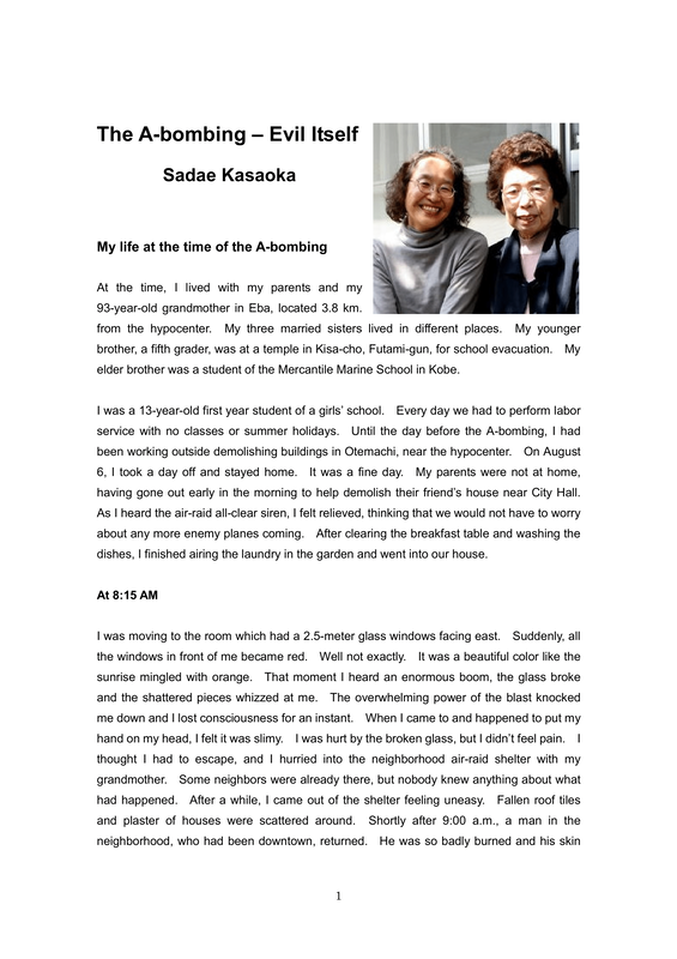


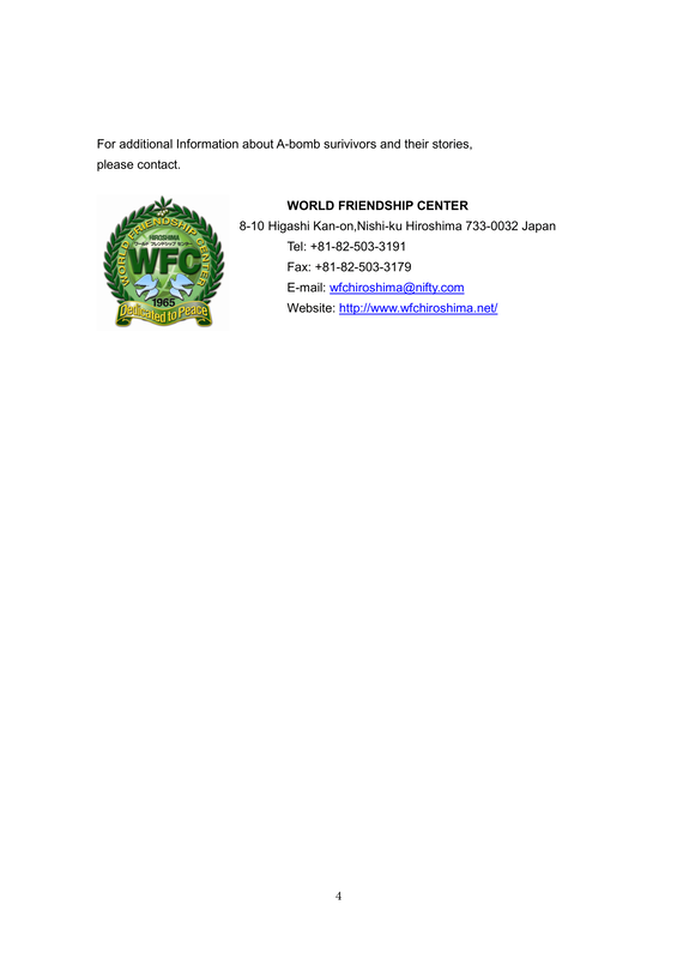


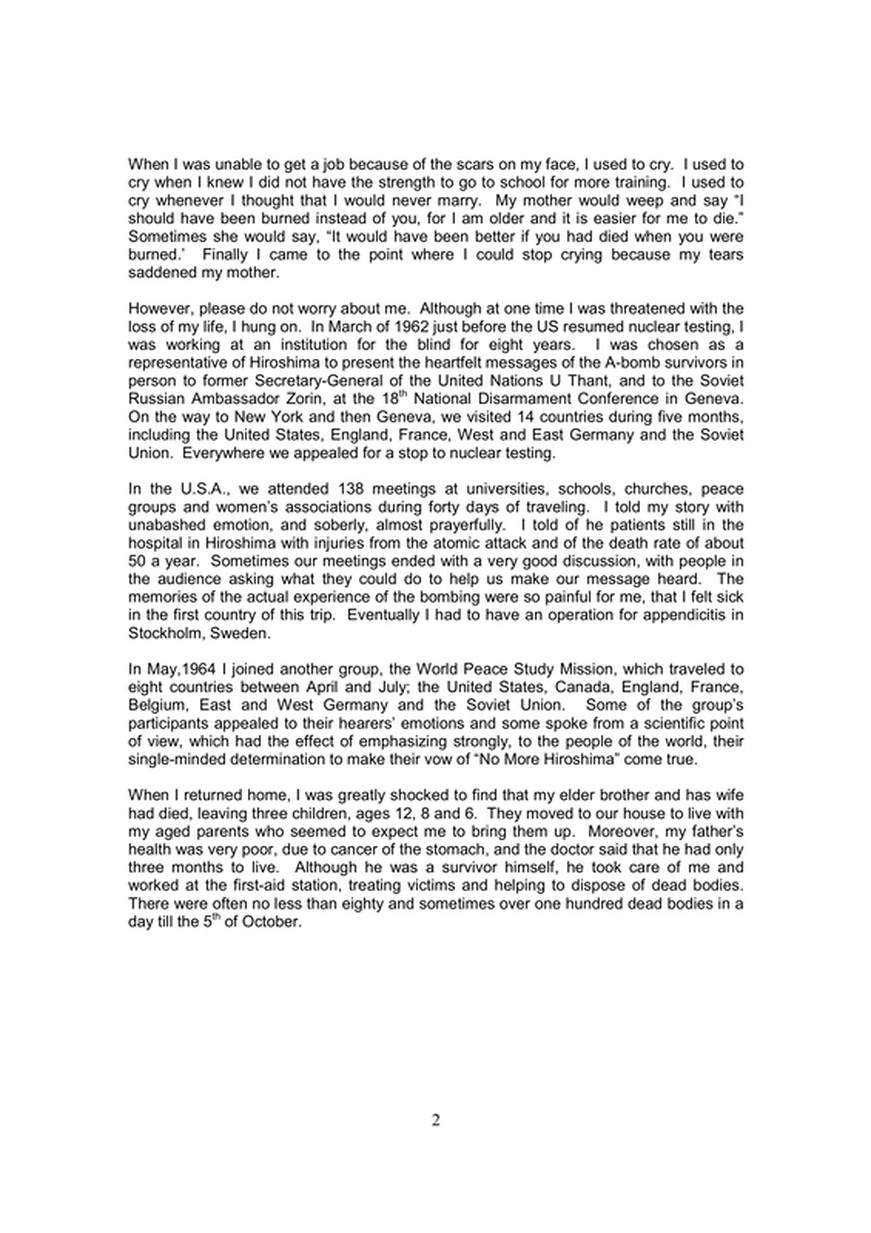
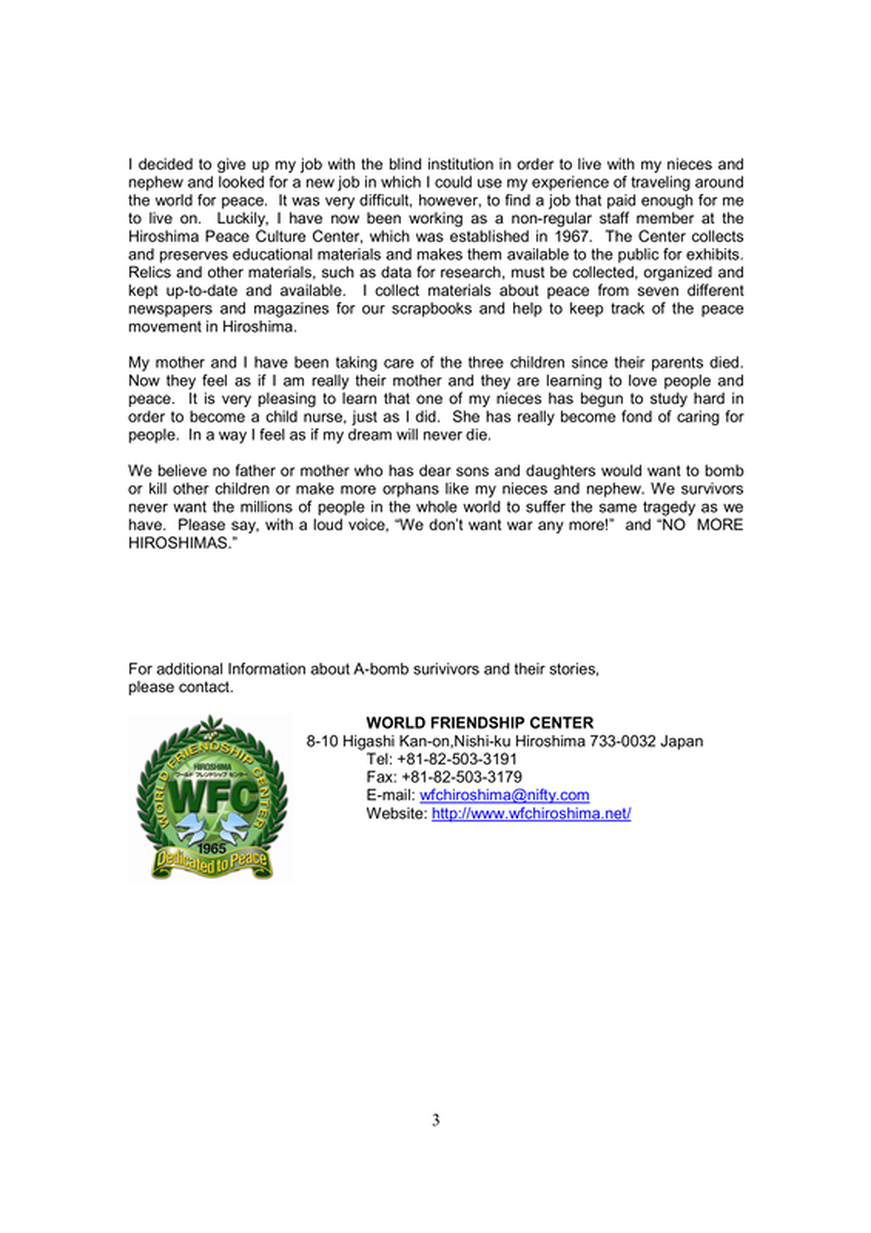

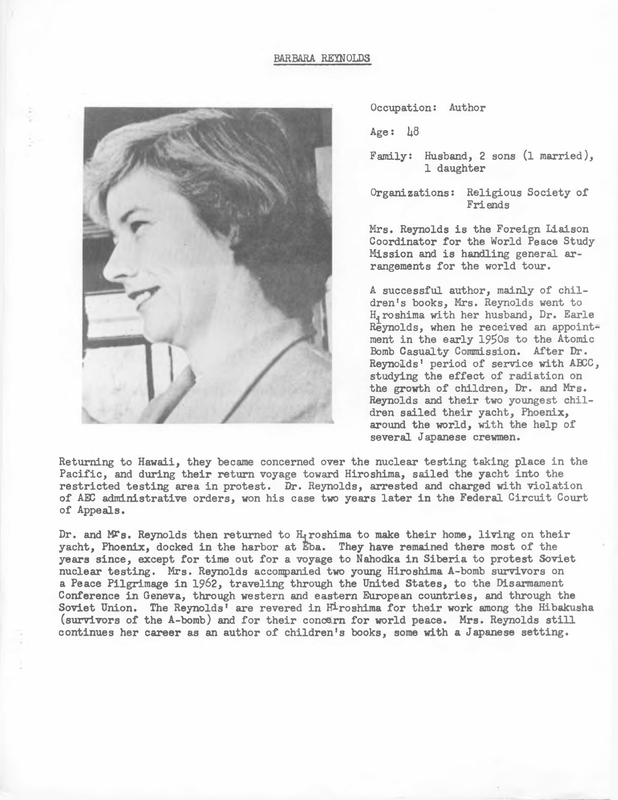

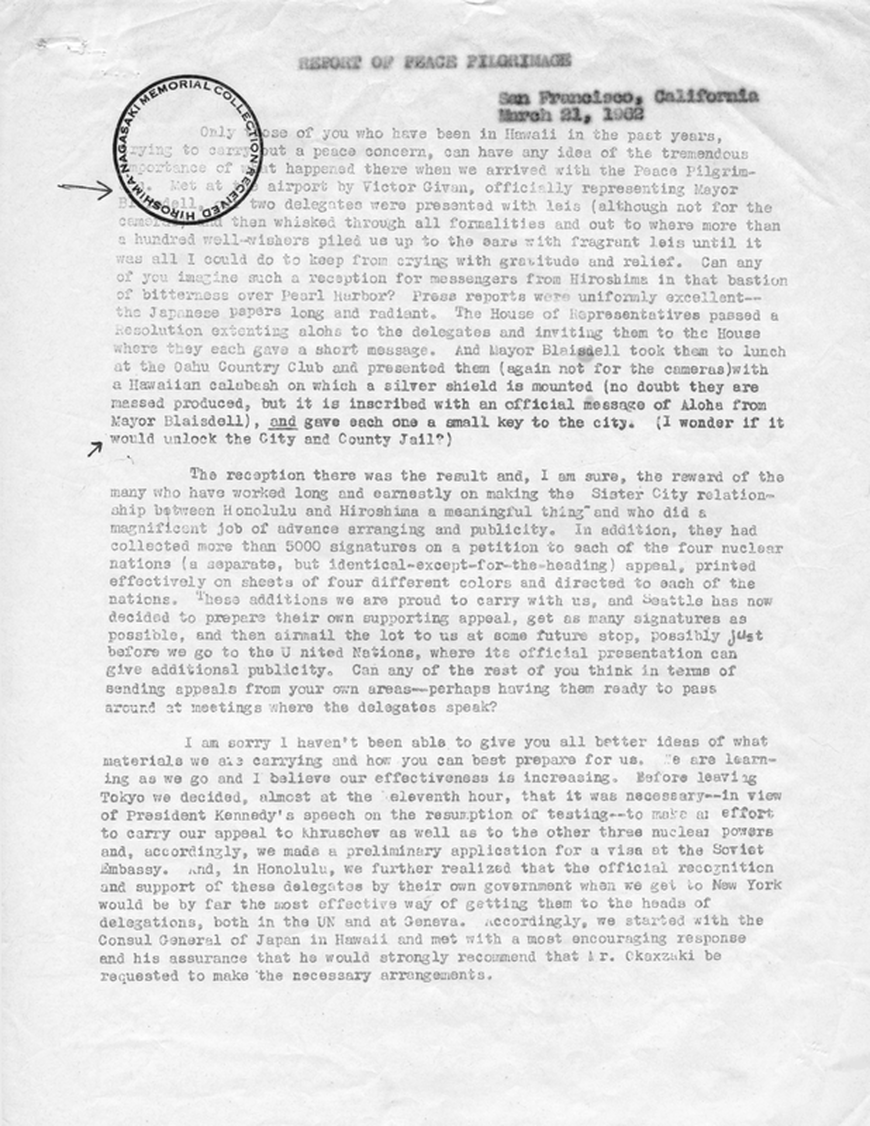

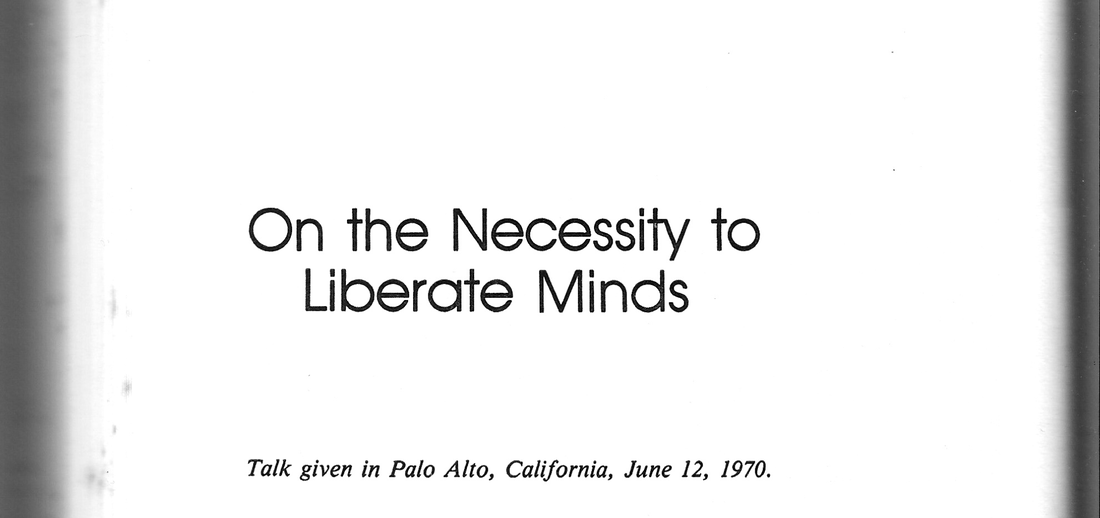


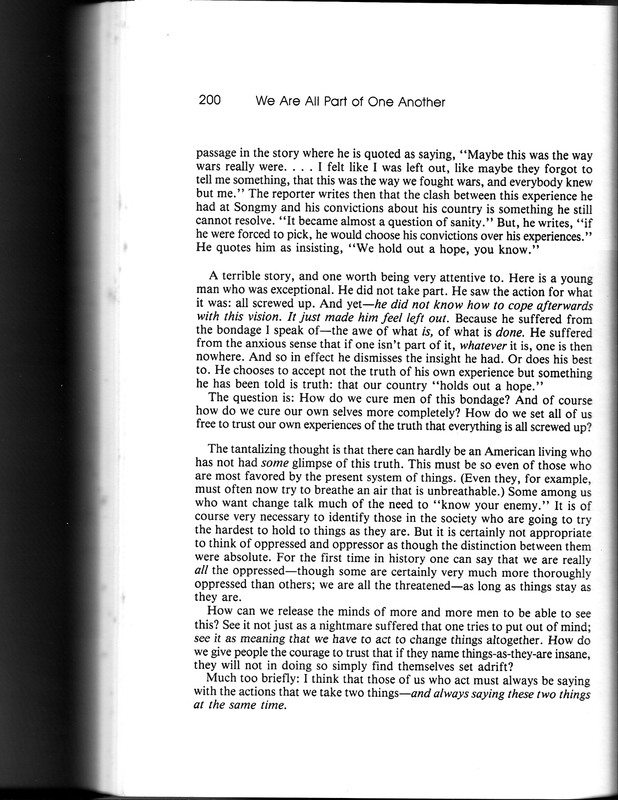





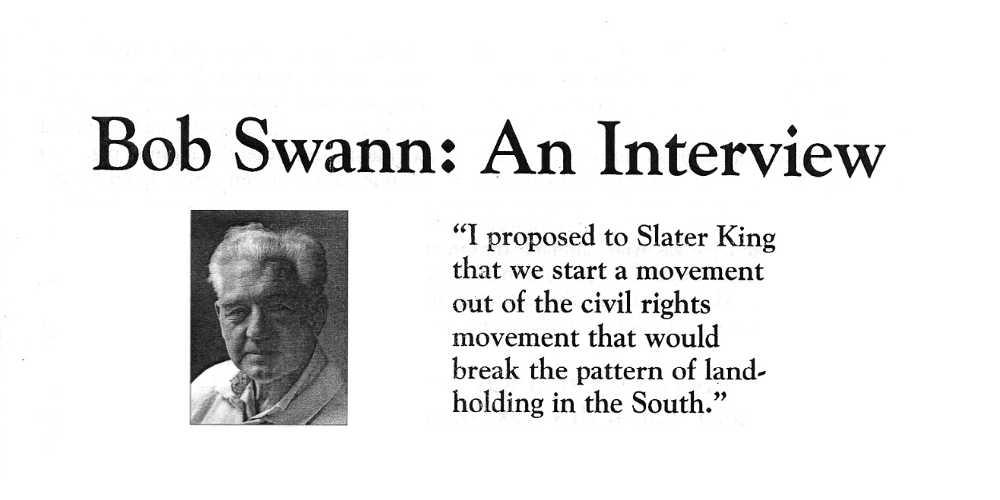




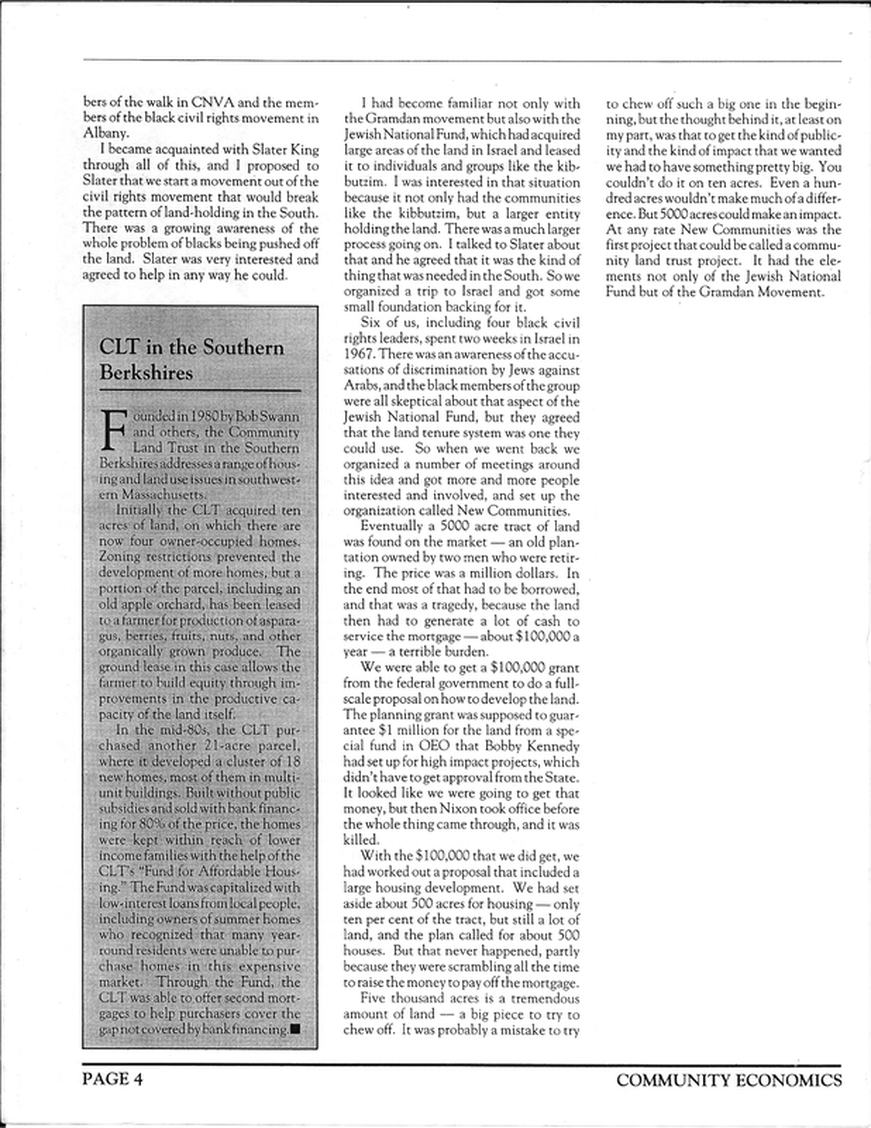



 RSS Feed
RSS Feed